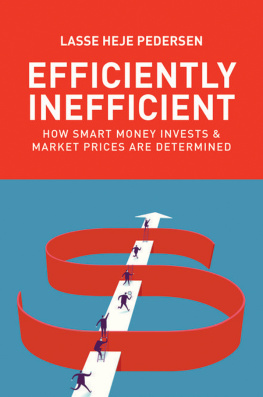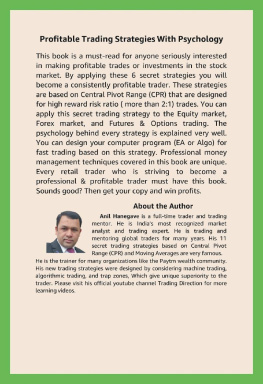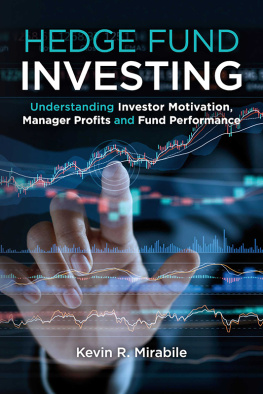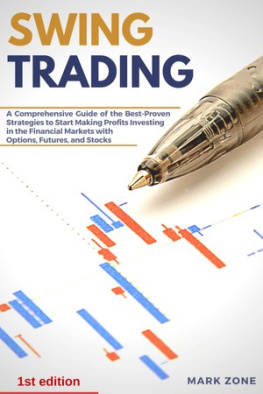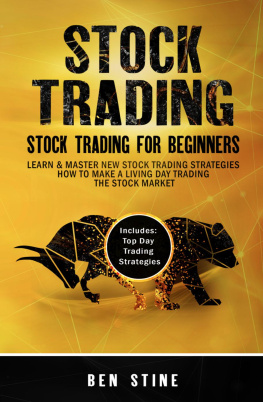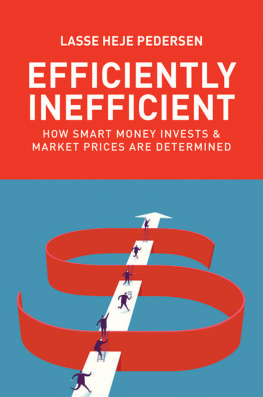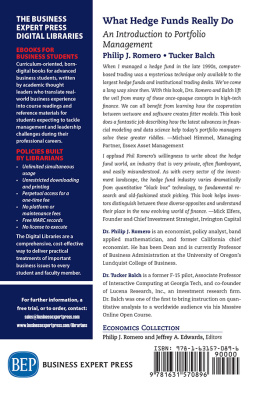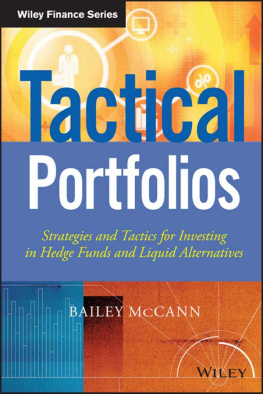
EFFICIENTLY INEFFICIENT
EFFICIENTLY INEFFICIENT
How Smart Money Invests and Market Prices Are Determined
LASSE HEJE PEDERSEN
PRINCETON UNIVERSITY PRESS
PRINCETON AND OXFORD
Copyright 2015 by Princeton University Press
Published by Princeton University Press, 41 William Street, Princeton, New Jersey 08540 In the United Kingdom: Princeton University Press, 6 Oxford Street, Woodstock, Oxfordshire OX20 1TW
press.princeton.edu
Jacket art akindo/Getty Images
All Rights Reserved
Library of Congress Cataloging-in-Publication Data
Pedersen, Lasse Heje.
Efficiently inefficient : how smart money invests and market prices are determined / Lasse Heje Pedersen.
pages cm
Includes bibliographical references and index.
ISBN 978-0-691-16619-3 (hardcover : alk. paper) 1. Investment analysis. 2. Investments. 3. Portfolio management. 4. Capital market. 5. SecuritiesPrices. 6. Liquidity (Economics) I. Title.
HG4529.P425 2015
332.6dc23
2014037791
British Library Cataloging-in-Publication Data is available
This book has been composed in Sabon Next LT Pro and DINPro
Printed on acid-free paper.
Printed in the United States of America
10 9 8 7 6 5 4 3 2 1
Contents
The Main Themes in Three Simple Tables
OVERVIEW TABLE I. EFFICIENTLY INEFFICIENT MARKETS
Market Efficiency | Investment Implications |
Efficient Market Hypothesis: | Passive investing: |
The idea that all prices reflect all relevant information at all times. | If prices reflect all information, efforts to beat the market are in vain. Investors paying fees for active management can expect to underperform by the amount of the fee. |
However, if no one tried to beat the market, who would make the market efficient? |
Inefficient Market: | Active investing: |
The idea that market prices are significantly influenced by investor irrationality and behavioral biases. | If prices bounce around with little relation to fundamentals due to investors being nave, beating the market would be easy. |
However, markets are very competitive, and most investment professionals do not beat the market. |
Efficiently Inefficient Markets: The idea that markets are inefficient but to an efficient extent. Competition among professional investors makes markets almost efficient, but the market remains so inefficient that they are compensated for their costs and risks. | Active investment by those with a comparative advantage: A limited amount of capital can be invested with active managers who can beat the market using a few economically motivated investment styles. This idea underlying the book provides a framework for understanding why certain strategies work and how securities are priced. |
OVERVIEW TABLE II. HEDGE FUND STRATEGIES AND GURUS
Classic Hedge Fund Strategies | Gurus Interviewed in This Book |
The profit sources for active investment | Who personify the classic strategies |
Discretionary Equity Investing: | Lee Ainslie III: |
Stock picking through fundamental analysis of each companys business. | Star Tiger Cub and stock selector. |
Dedicated Short Bias: | James Chanos: |
Uncovering companies with overstated earnings or flawed business plans. | Legendary financial detective who shorted Enron before its collapse. |
Quantitative Equity: | Cliff Asness: |
Using scientific methods and computer models to buy and sell thousands of securities. | Quant luminary and a pioneer in the discovery of momentum investing. |
Global Macro Investing: | George Soros: |
Betting on the macro developments in global bond, currency, credit, and equity markets. | The macro philosopher who broke the Bank of England. |
Managed Futures Strategies: | David Harding: |
Trend-following trades across global futures and forwards. | Devised a systematic trend-detection system. |
Fixed-Income Arbitrage: | Myron Scholes: |
Relative value trades across similar securities such as bonds, bond futures, and swaps. | Traded on his seminal academic ideas that won the Nobel Prize. |
Convertible Bond Arbitrage: | Ken Griffin: |
Buying cheap illiquid convertible bonds and hedging with stocks. | Boy king who started trading from his Harvard dorm room and built a big business. |
Event-Driven Arbitrage: | John A. Paulson: |
Trading on specific events such as mergers, spin-offs, or financial distress. | Event master with the subprime greatest trade ever. |
OVERVIEW TABLE III. INVESTMENT STYLES AND THEIR RETURN DRIVERS
Investment Styles Ubiquitous methods used across trading strategies | Return Drivers Why these methods work in efficiently inefficient markets |
Value Investing: Buying cheap securities with a low ratio of price to fundamental valuee.g., stocks with a low price to book or price-earnings ratiowhile possibly shorting expensive ones. | Risk premiums and overreaction: A security that has a high risk premium or is out of favor becomes cheap, especially when investors overreact to several years of bad news. |
Trend-Following Investing: Buying securities that have been rising while shorting those that are falling, i.e., momentum and time series momentum. | Initial underreaction and delayed overreaction: Behavioral biases, herding, and capital flows can lead to trends as prices initially underreact to news, catch up over time, and eventually overshoot. |
Liquidity Provision: Buying securities with high liquidity risk or securities being sold by other investors who demand liquidity. | Liquidity risk premium: Investors naturally prefer to own securities with lower transaction costs and liquidity risk, so illiquid securities must offer a return premium. |
Carry Trading: Buying securities with high carry, i.e., securities that will have a high return if market conditions stay the same (i.e., if prices do not change). | Risk premiums and frictions: Carry is a timely and observable measure of expected returns as risk premiums are likely to be reflected in the carry. |
Low-Risk Investing: Buying safe securities with leverage while shorting risky ones, also called betting against beta. | Leverage constraints: Low-risk investing profits from a leverage risk premium as other investors demand high-risk lottery assets to avoid using leverage. |
Next page
